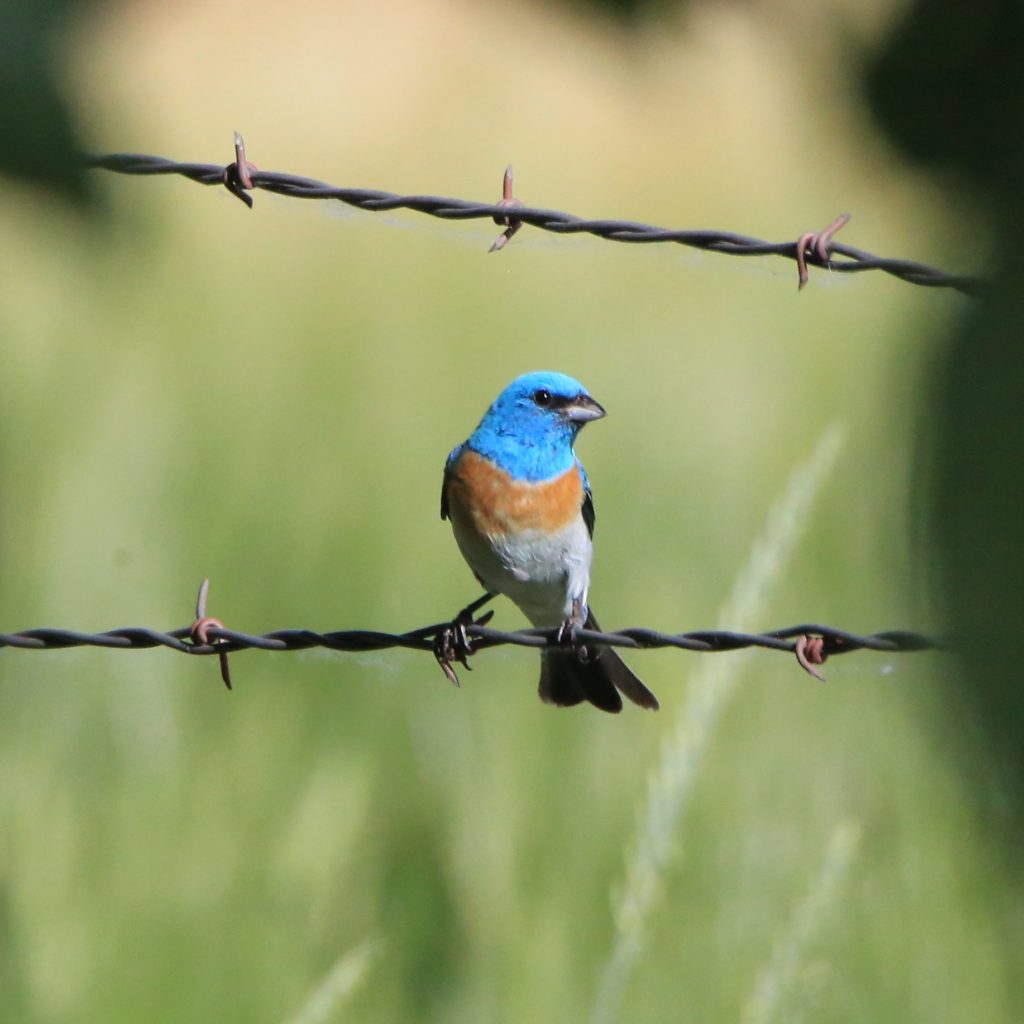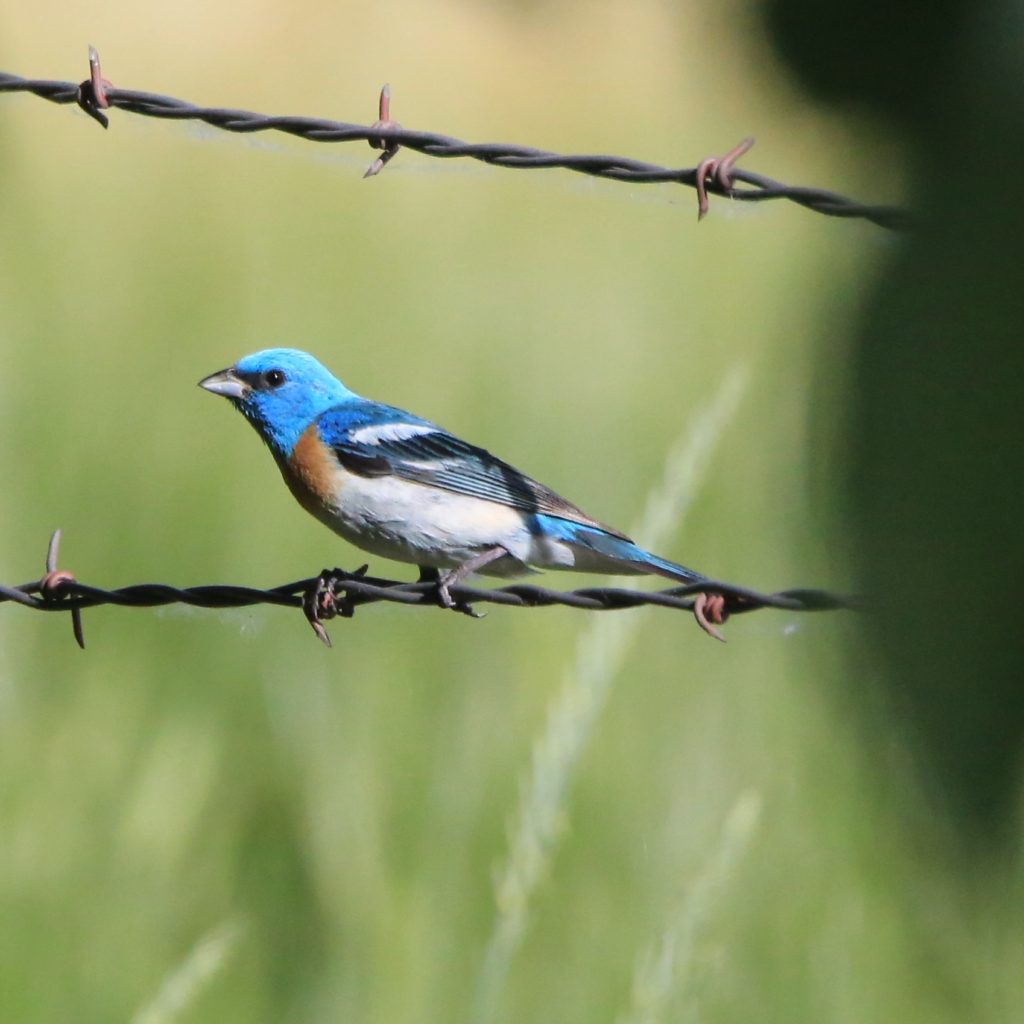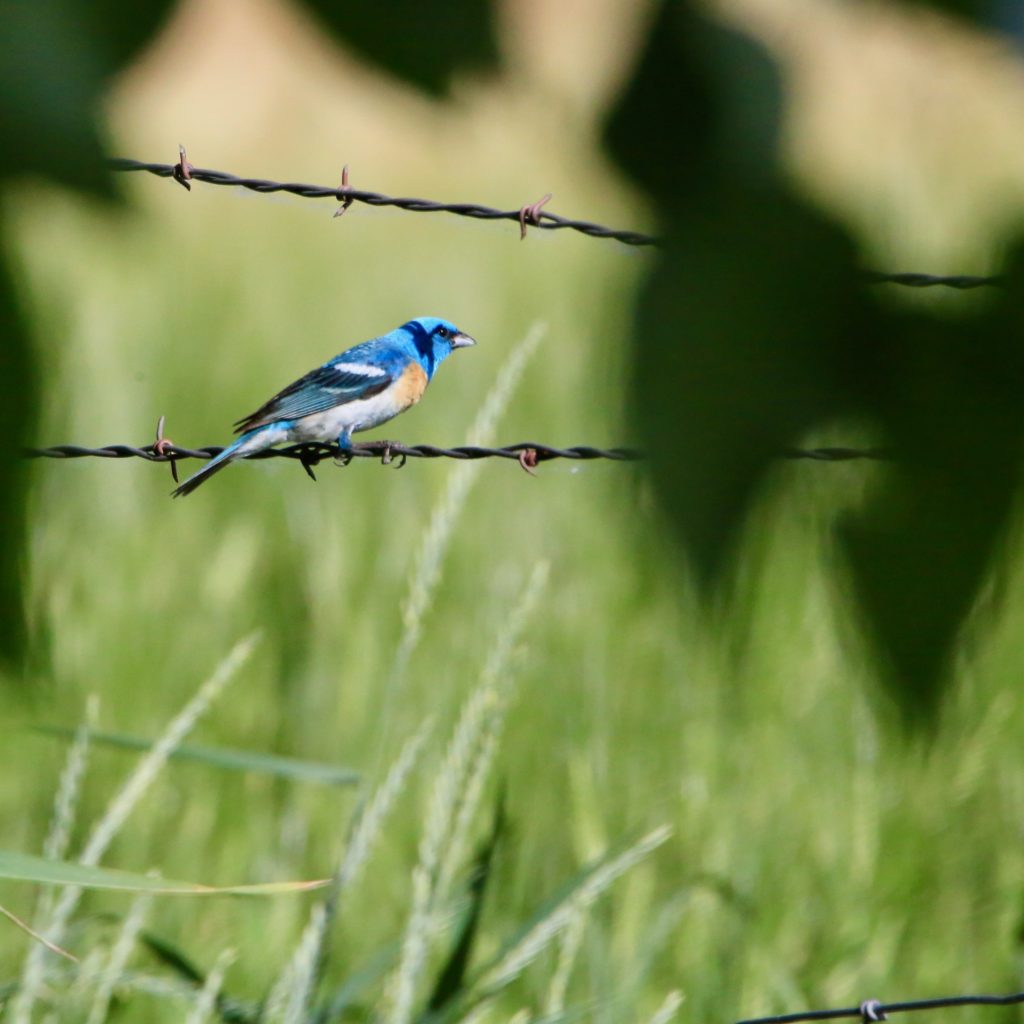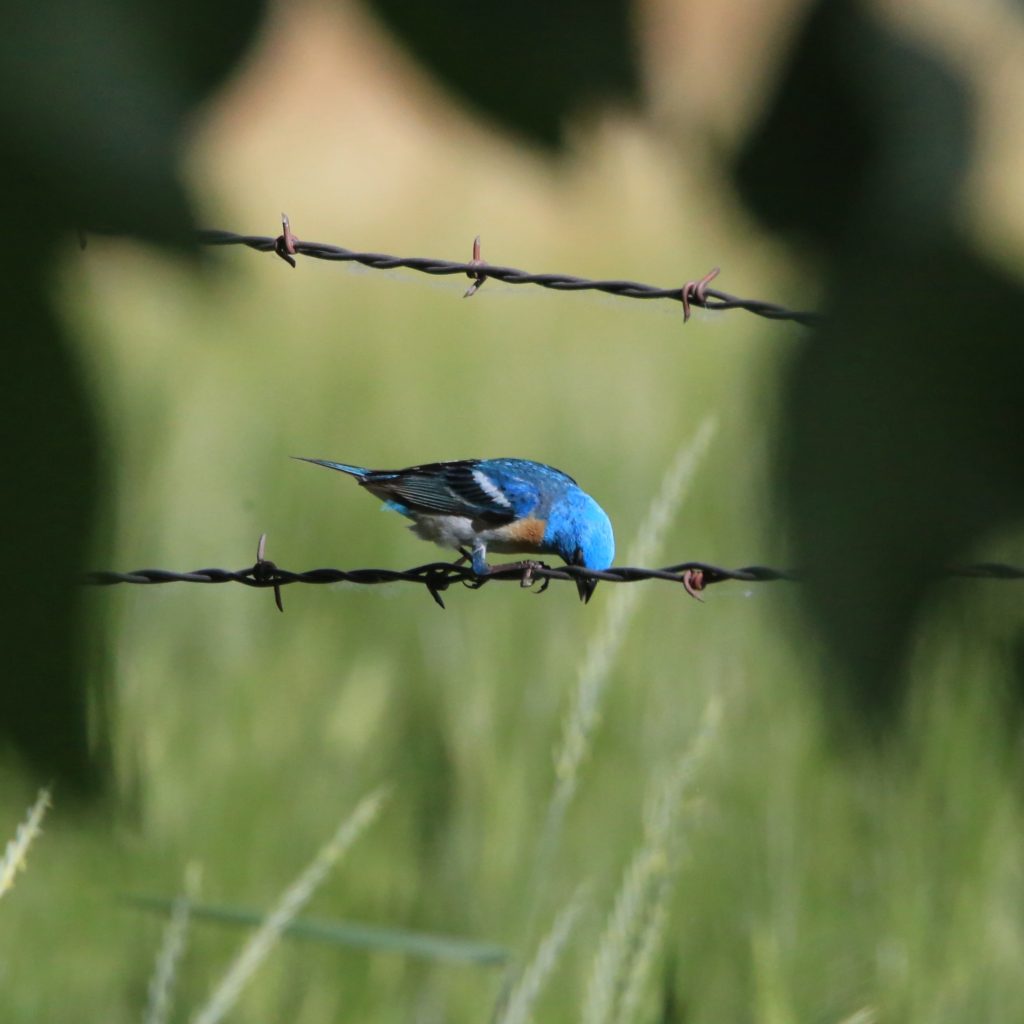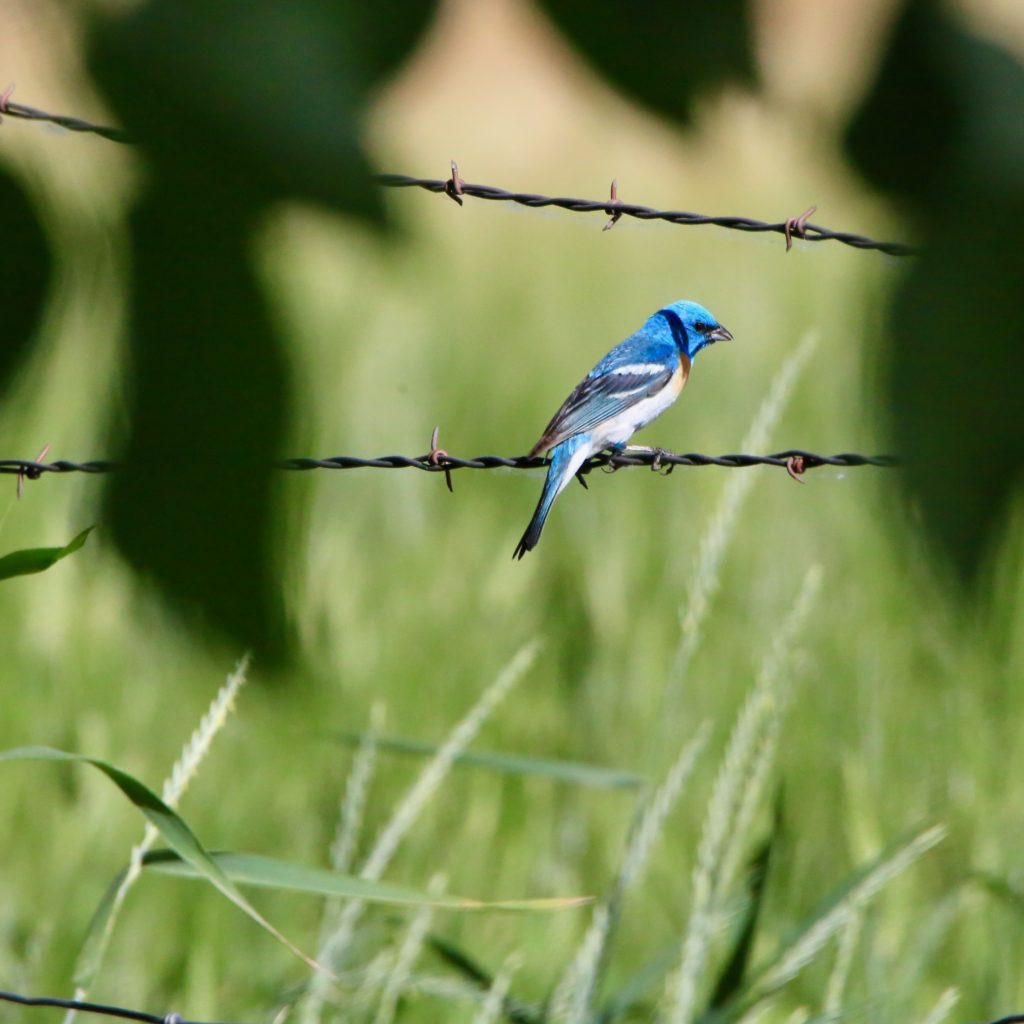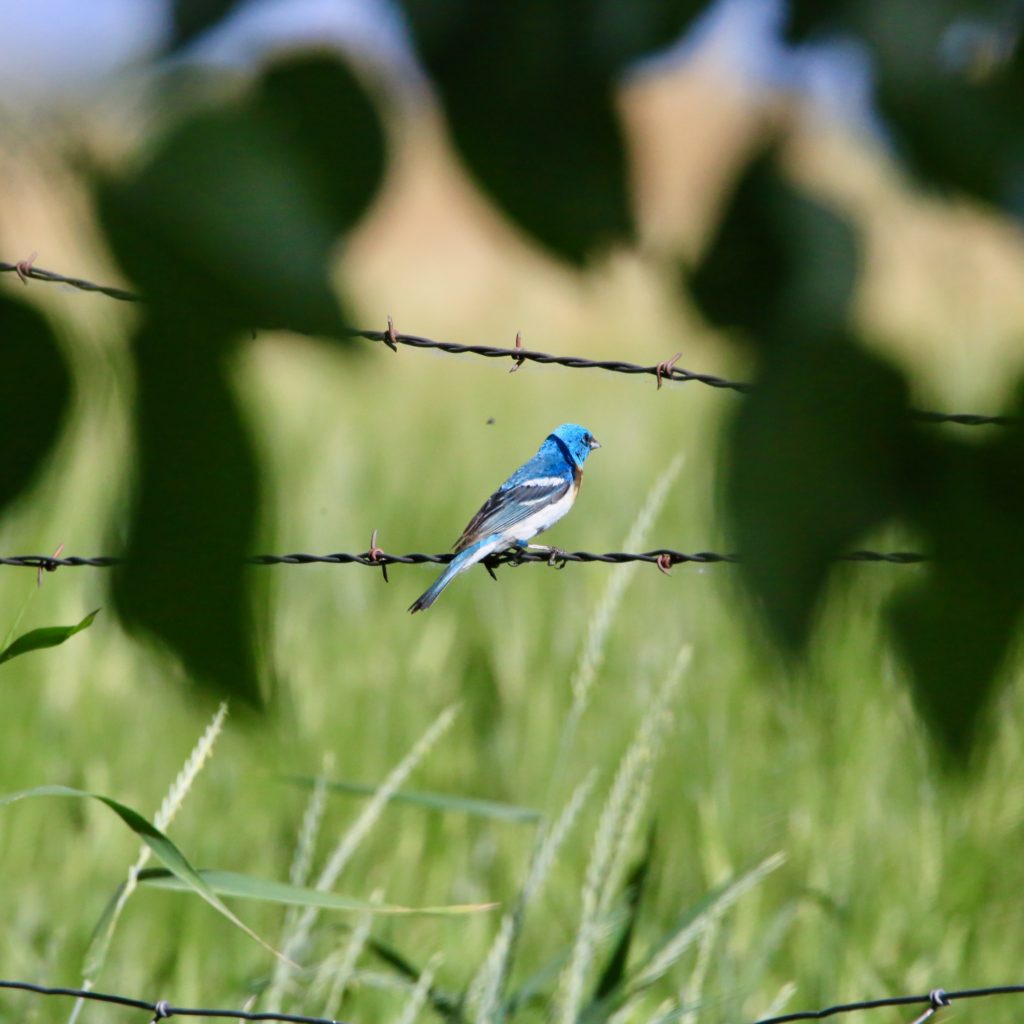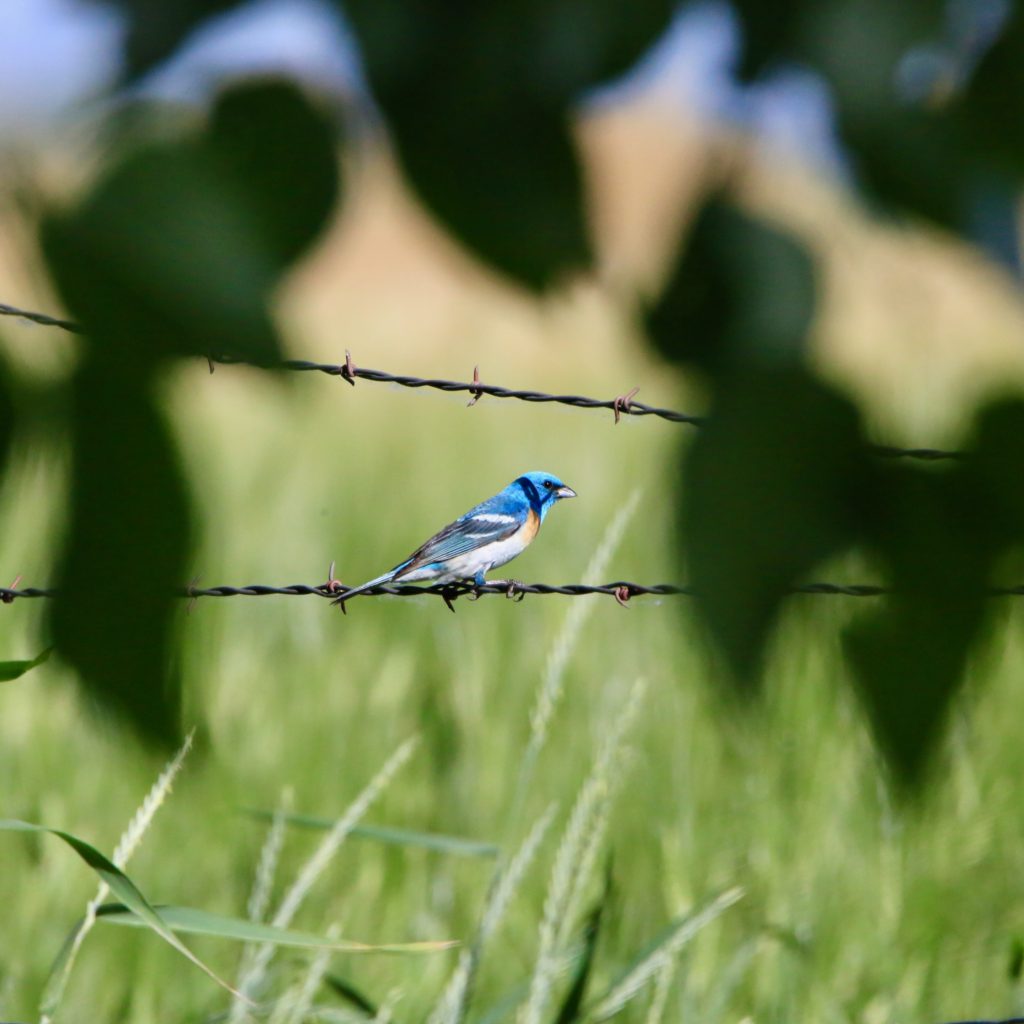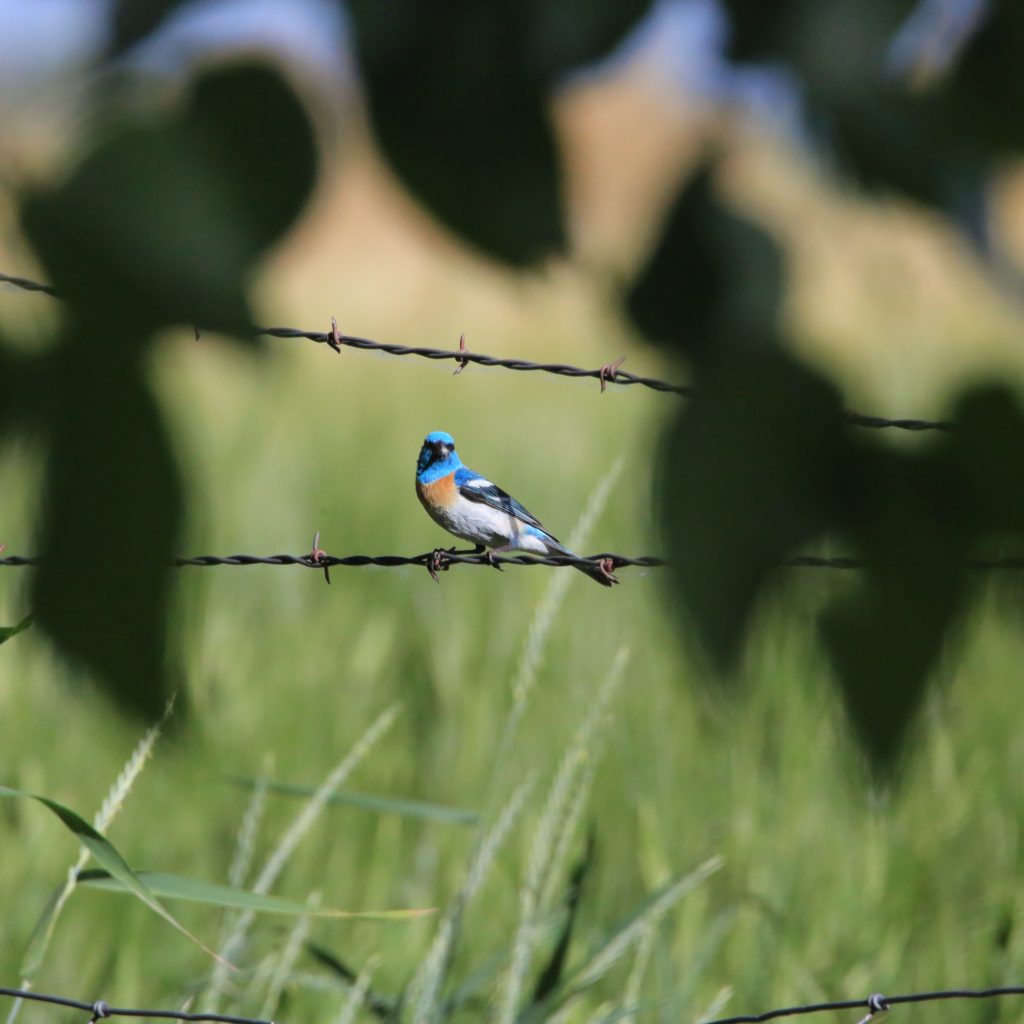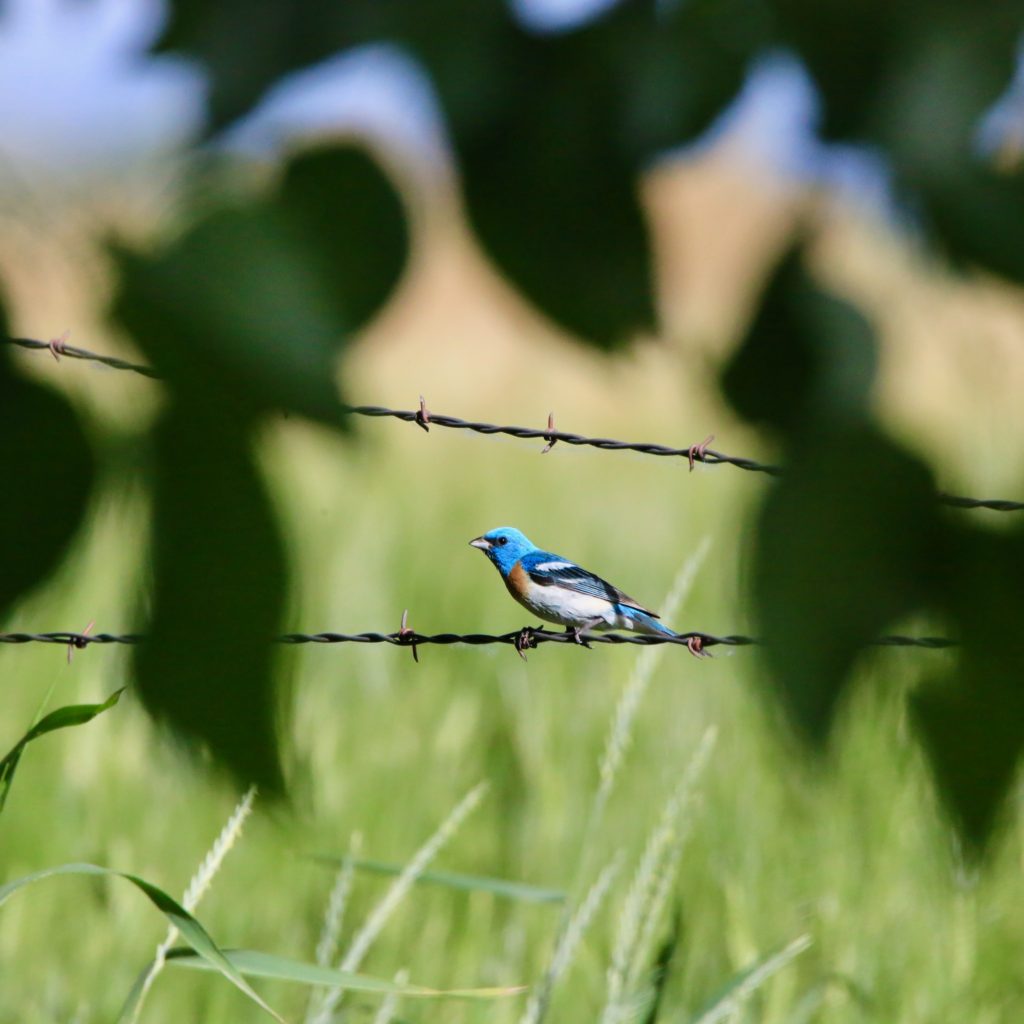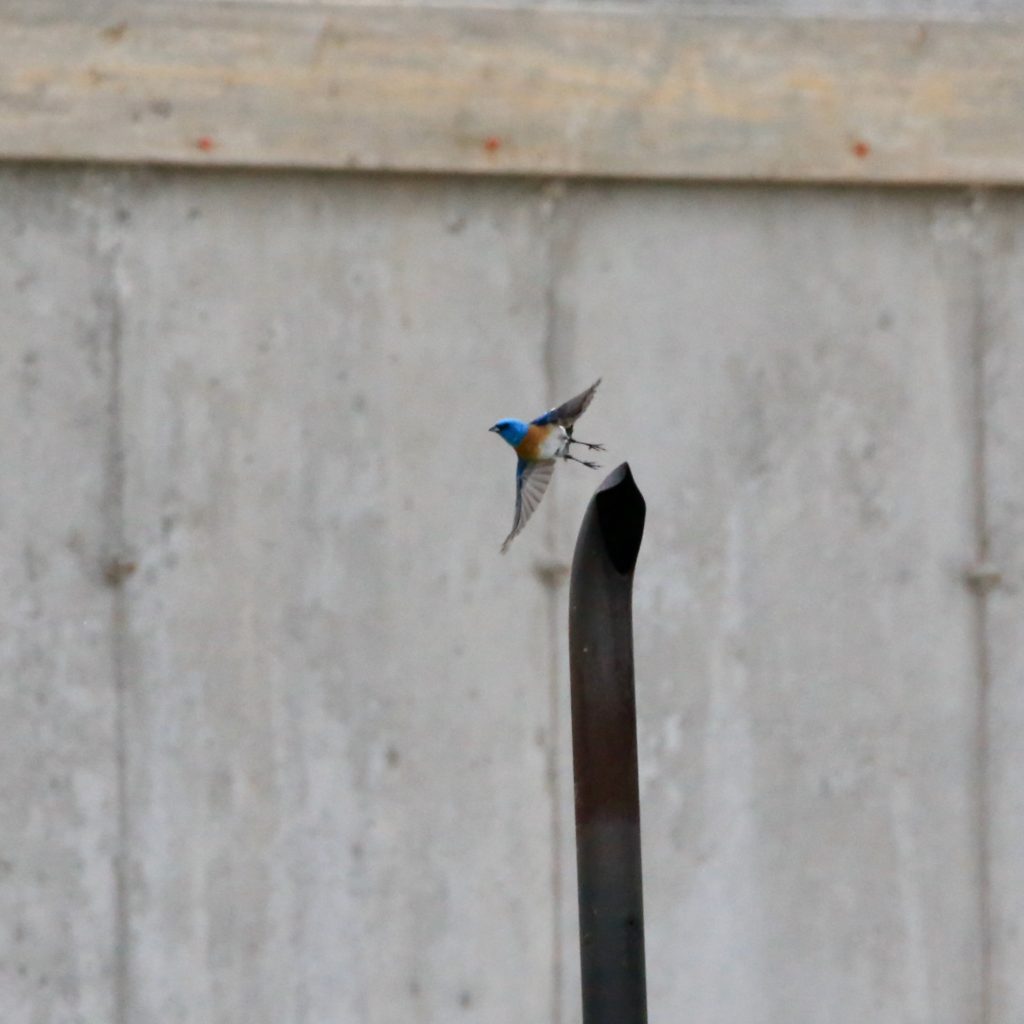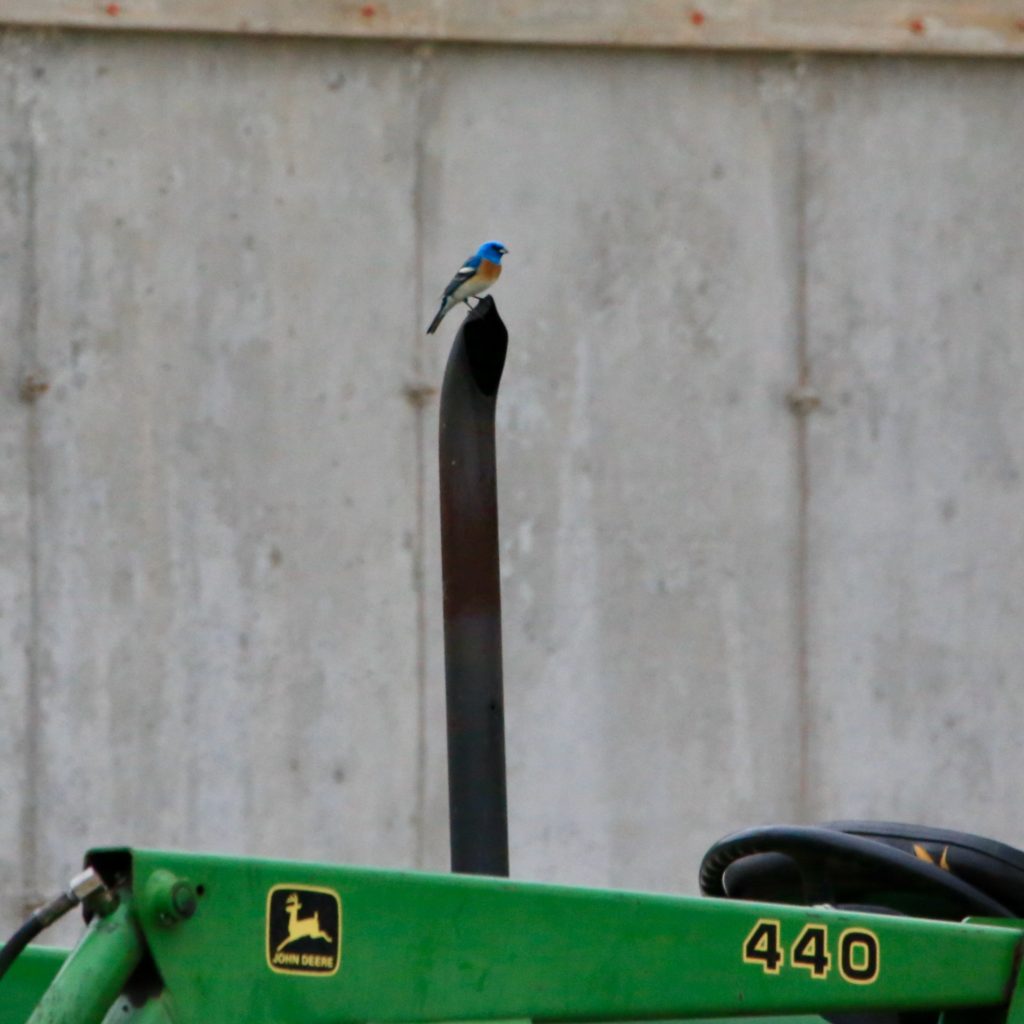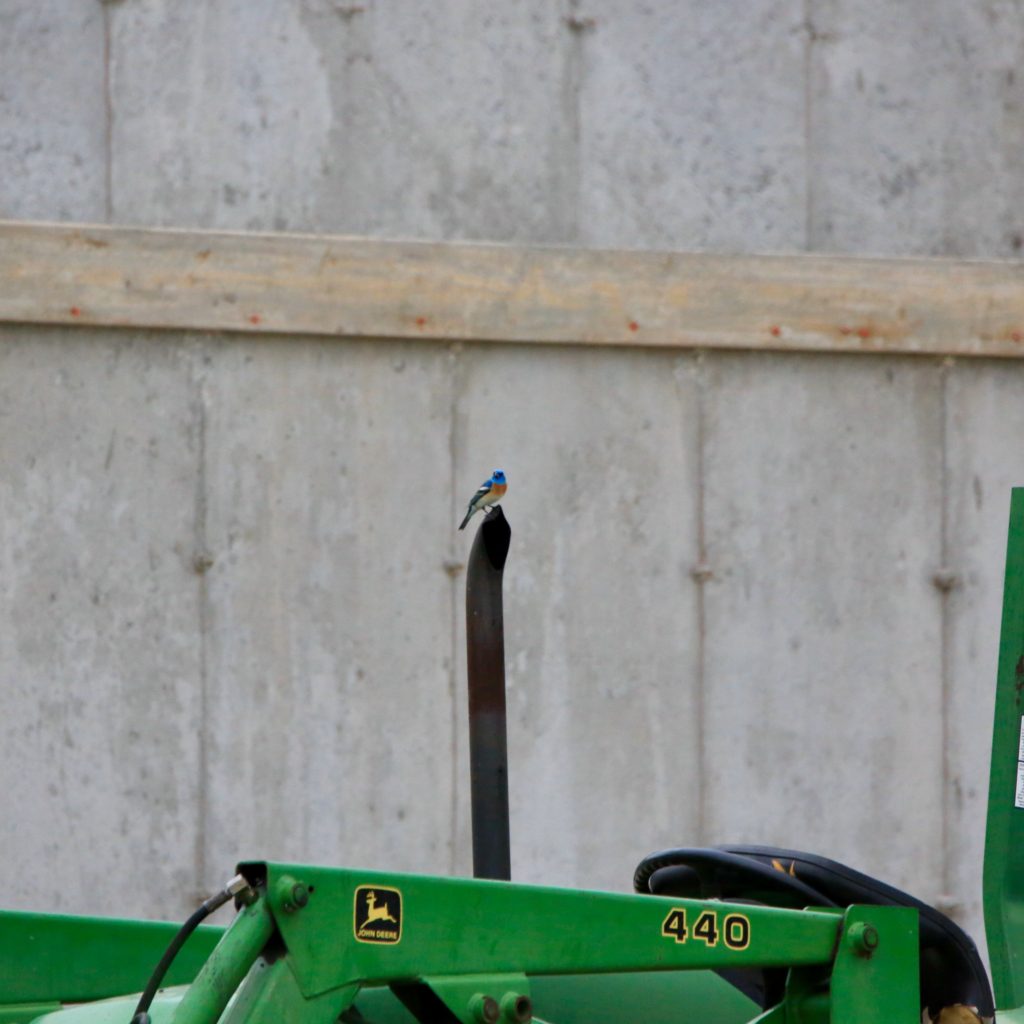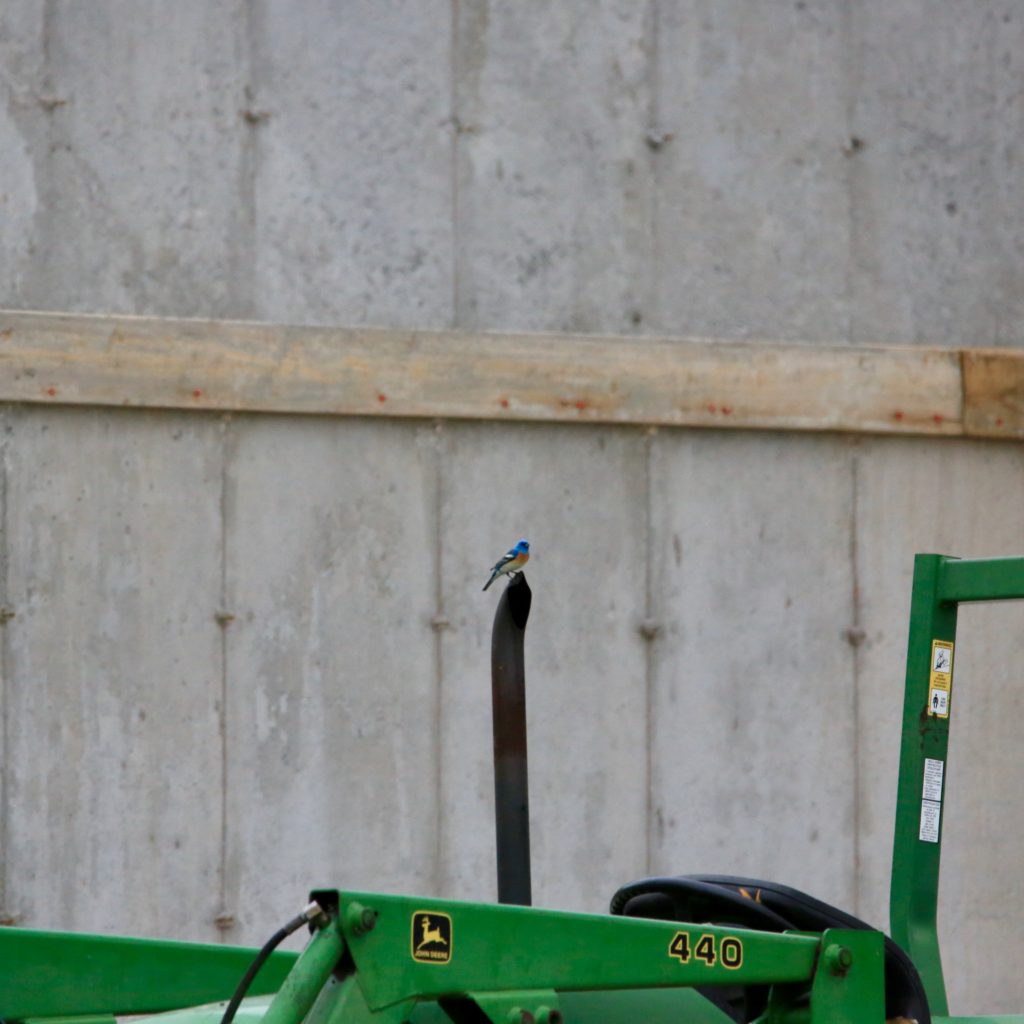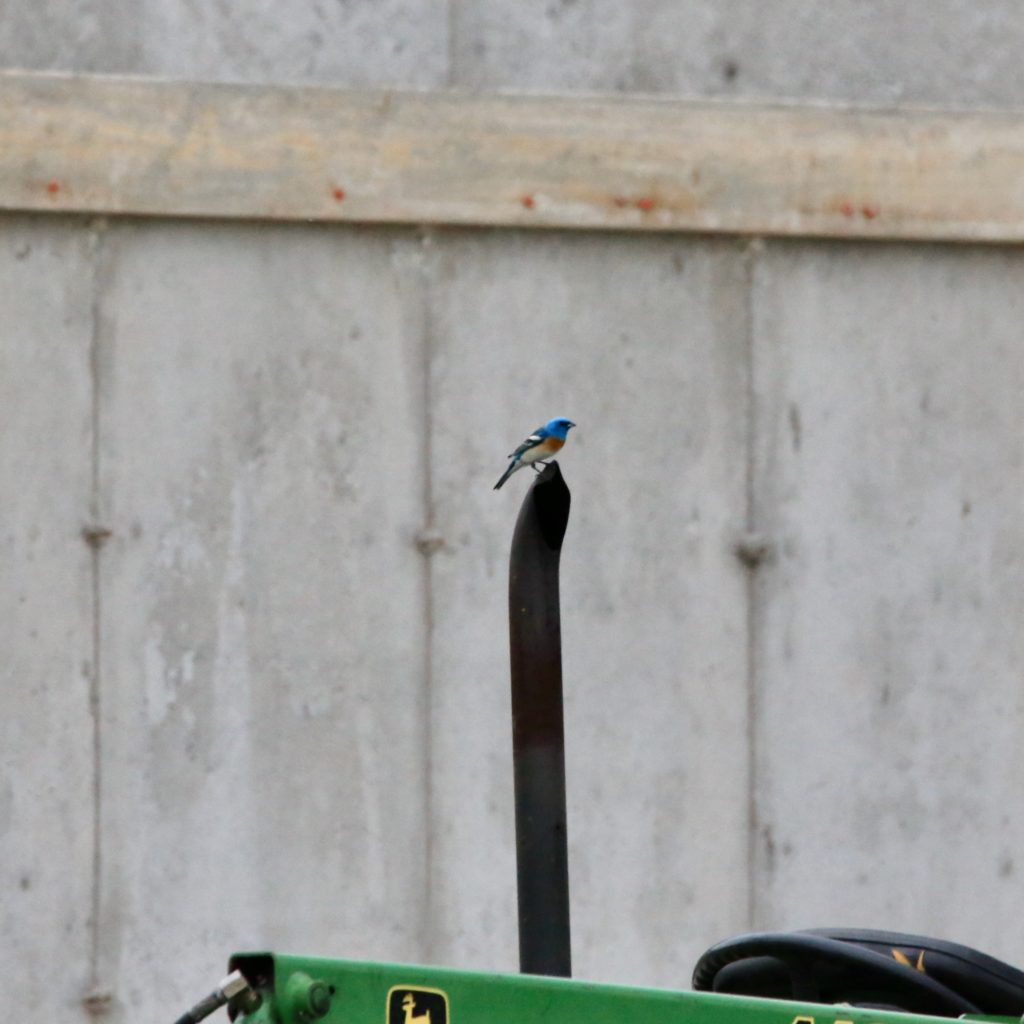
The Lazuli Bunting
A Lazuli Bunting is a fun bird to see while bird watching. Below are some tips to help you identify Lazuli Buntings. We have also put together a list of fun Lazuli Bunting t-shirts, Lazuli Bunting bird patches, birdhouses, bird feeders, binoculars, stickers, and other fun bird-watching items.
About Lazuli Buntings
The Lazuli Bunting is a fairly small bird in the cardinal family. They are native to North America and are colorful. The American songbird was named for the gemstone lapis lazuli. The bird is distributed in the western regions of Central and Southern America. They breed west of the 100th meridian in South Canada all the way to northern Texas, central New Mexico to the South, Arizona, and southern California. The Lazuli Bunting is widespread and common in their habitats while their numbers are stable in the region.
Description and Identification
Lazuli Buntings are small, stocky songbirds around 5 – 6 inches in length with cone-shaped
bills and gently sloping foreheads. Their wingspan is typically about 8.7 inches. Breeding
adult males of these songbirds are the most easily distinguishable due to their vivid blue
heads, white bellies, and pumpkin-colored breasts. When perched or in flight, males also
have a white shoulder patch that can be noticed from below. Females tend to be of warm
hues with grayish-brown upper parts and a blue tinge to the wings and tail. They also have
two buffy bars on their wings along with pale cinnamon or tan breast. Non-breeding males
and immatures usually have a pumpkin-colored breast like breeding males, but their backs
and heads are mottled blue and tan.
Lazuli Bunting Color Pattern
Male and female Lazuli Bunting is not similar in color. The male Lazuli Bunting is easily identified by its bright blue back and head. It has a conspicuous white wing bar and a light rust breast. The underbelly is white and the thighs are the same bright blue. The female brown with a warmer brown underneath and grayer upperparts. They are almost similar to the female Indigo Bunting but could be told apart by their two pale wing bars.
Lazuli Bunting Size
The bird is fairly smaller than other types of birds in the cardinal family. They have a body length ranging between 13-14 cm and have a wingspan averaging about 22cm. Their body mass stands at about 15 grams.
Lazuli Bunting Behavior
They spend most of their time on the groundhopping and perching on shrubs. Sometimes, they would make short flights from one shrub to another while making rapid wingbeats. The male arrives on breeding grounds a few days before the female. They perch on taller trees in their territorial boundaries with the objective of announcing their presence.
Lazuli Bunting Food
Lazuli Buntings are primarily insectivores but also consume berries and seeds from
numerous plants. They forage for their insect prey from under leaves and grasses in the
forest understory and within bushes but breeding males can be far more elusive on treetops.
Their insect prey mainly consists of caterpillars, grasshoppers, ants, beetles, butterflies, and
other insects found in the area. They also consume anthropods like spiders regularly. Their
plant diet mainly revolves around berries and seeds from serviceberry, chokecherry, wild
oats, chickweed, and other grasses. These birds are also frequent visitors to bird feeders in
urban areas.
They eat seeds and insects including grasshoppers, beetles, caterpillars, and true bugs. Seeds make up most of their winter diet.
Lazuli Bunting Habitat
These round birds primarily live in brushy hillsides and in areas near streams, wooded
valleys, well-watered weedy pastures, and thickets. In urban areas, they can be found in
hedges along with agricultural fields and residential gardens from sea level to an altitude of more
than 9,500 feet. They are also particularly common in recently burned areas but do not seem
to prefer sites that have been recently deforested. During winter, they tend to use overgrown
fields, thorn forests, second-growth pine-oak forests, agricultural areas, and hedgerows.
The Lazuli Bunting like open brush habitats. They can also be found in streamside shrubs.
Range and Migration
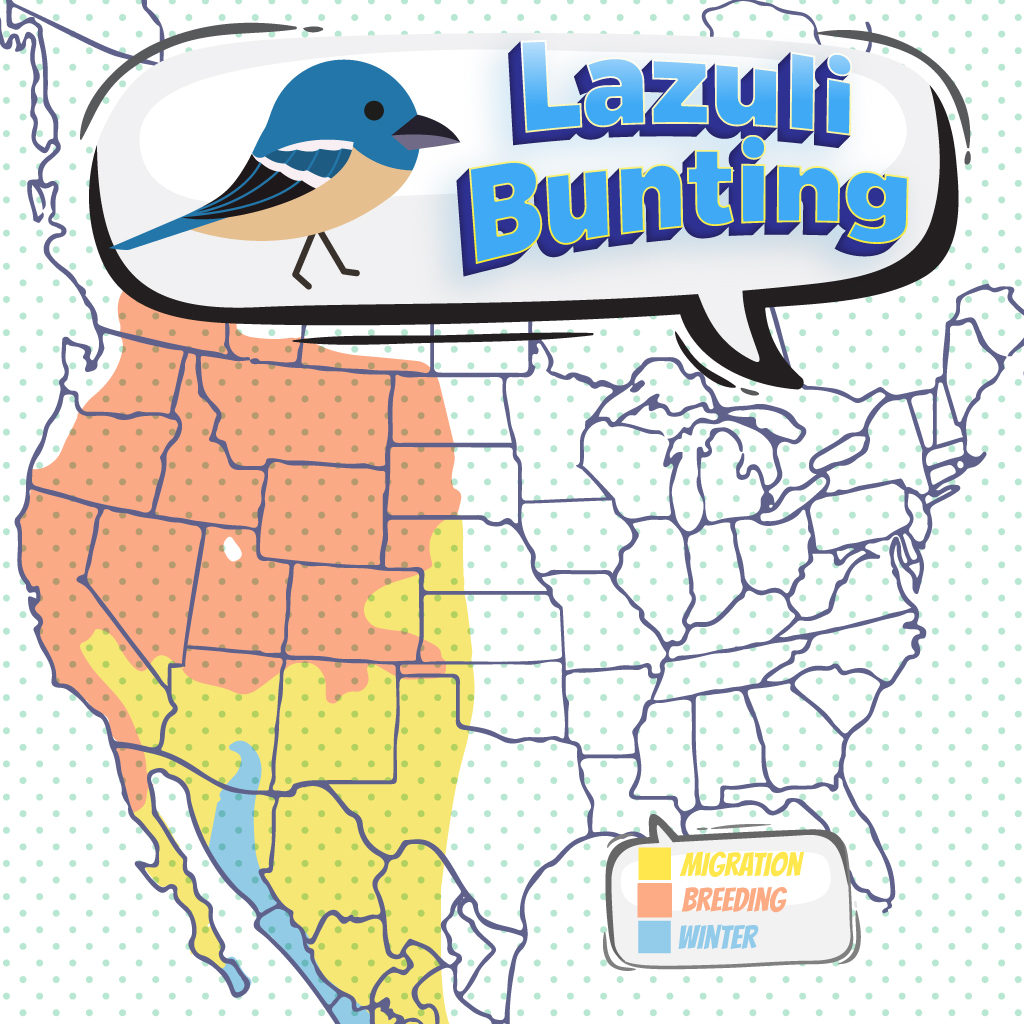
Lazuli Buntings are easily distinguishable songbirds that are named after the gemstone
Lapis Lazuli. They breed west of the 100th meridian, with their summer range extending from
southern Canada to extreme north-western Baja California. These birds are limited to the
western half of North America throughout the year, with wintering migrations taking these
short-distance migrants towards south-eastern Arizona and central Mexico. These birds
mainly travel at night during migration seasons.
Lazuli Bunting Life Cycle
The female clutch 3-5 eggs per brooding season and keeps them incubated for about 12 days before the young hatch. The young leave their nest 12 days after the day they hatched. The Lazuli Bunting has a life expectancy of 9.9 years.
Lazuli Bunting Nesting
Nesting sites are selected by females typically within 3 feet of the ground and near the edge
of the shrub. The trees nests are usually placed on are willow, wild rose, ninebark,
snowberry, blackberry, or Oregon grape. The construction of the nests is carried out by the
females them weaving the outer cup out of grasses, strips of bark, leaves, and
spiderweb or silk before they line the interior with softer materials. The resulting nests are
around 3.5 inches in diameter, ideal in size for a clutch of 3 – 4 eggs.
Ornithology
Bird Watching Academy & Camp Subscription Boxes
At Bird Watching Academy & Camp we help kids, youth, and adults get excited and involved in bird watching. We have several monthly subscription boxes that you can subscribe to. Our monthly subscription boxes help kids, youth, and adults learn about birds, bird watching, and bird conservation.
Bird Watching Binoculars for Identifying Lazuli Buntings
The most common types of bird-watching binoculars for viewing Lazuli Buntings are 8×21 binoculars and 10×42 binoculars. Bird Watching Academy & Camp sells really nice 8×21 binoculars and 10×42 binoculars. You can view and purchase them here.
Lazuli Bunting T-shirts
If you love the Lazuli Bunting you should purchase a Bird Watching Academy & Camp T-shirt. To help support bird conservation we donate 10 percent to bird conservation activities.
Lazuli Bunting Iron On Patches
Kids, Youth, and Adults love to collect our Bird Watching Academy & Camp iron-on patches. Our bird-watching patches help you keep track of the birds you have seen and identified. You can also display the patches on our Bird Watching Academy & Camp banners.
The Lazuli Bunting is a great iron-on patch to start your collection with. The patches are durable and can be sewn on or ironed on to just about anything.
Lazuli Bunting Stickers
Stickers are a great way for you to display your love for bird watching and the Lazuli Bunting. We sell a monthly subscription sticker pack. The sticker packs have 12 bird stickers. These sticker packs will help your kids learn new birds every month.
Bird Feeders for Lazuli Buntings
There are many types of bird feeders. Here are our favorite bird feeders for your backyard. We use all of these bird feeders currently. Kids will have a great time watching birds eat at these bird feeders. Using this collection of bird feeders will provide a wide variety and many types of birds.
Best Bird Houses for Lazuli Buntings
There are many types of birdhouses. Building a birdhouse is always fun but can be frustrating. These 4 birdhouses have become our favorites. Getting a birdhouse for kids to watch birds grow is always fun. We spent a little extra money on these birdhouses but they have been worth the higher price and look great.


